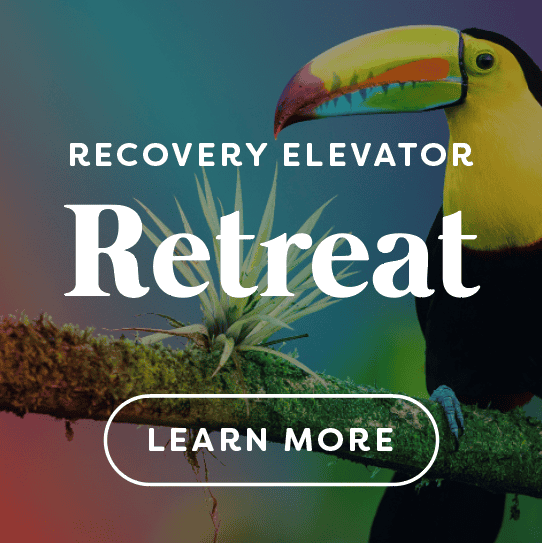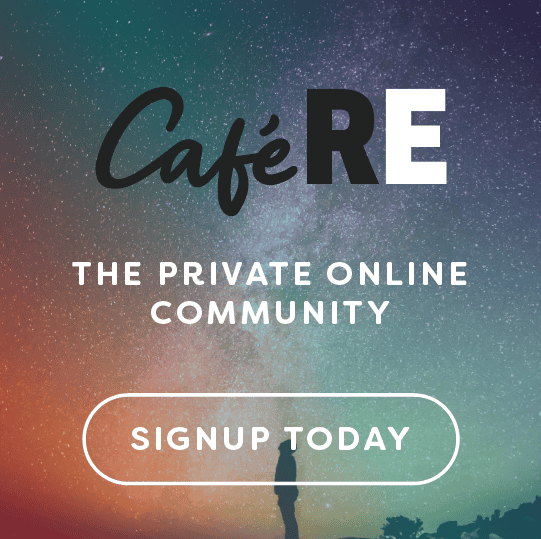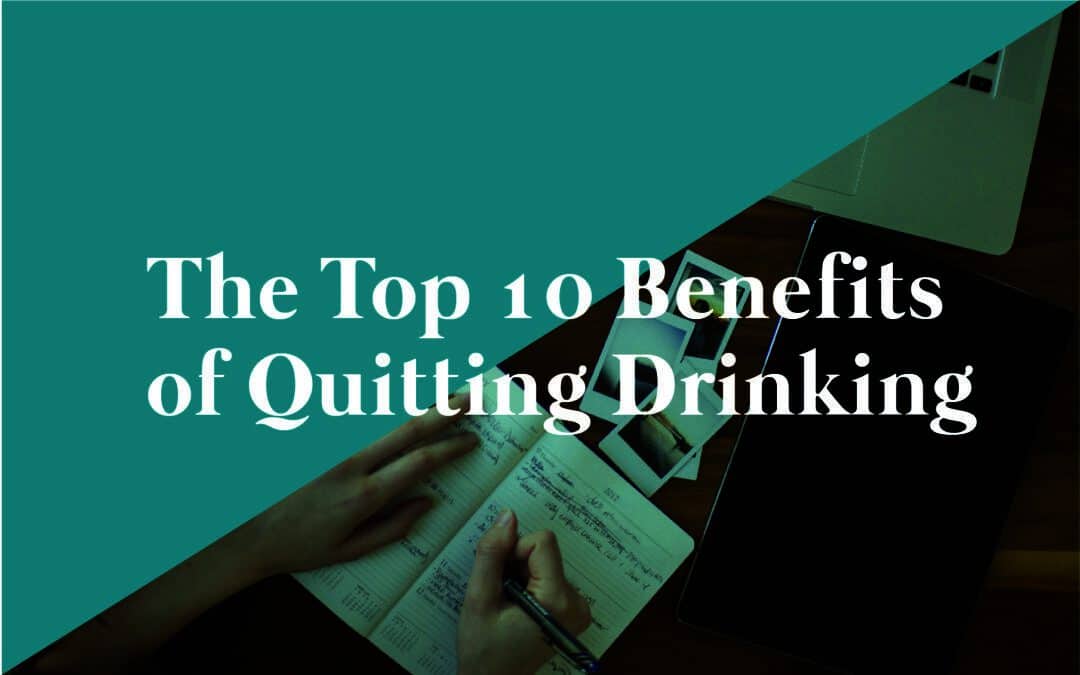
by Kerri MacFarlane | Sep 18, 2020 | Alcohol Relapse, Blog, Early Sobriety, Helpful Tips, Resources, The first Year
?? Hi, my name is Kerri Mac. Some of you may know me, but I’m betting that most of you don’t. I want to thank you for taking the time to read my blog, my very first blog.
How did I end up here, writing a blog for Recovery Elevator? Well, I like to think of it as though I graduated. Two years ago I started writing the show notes for the podcast. And now, here I am…writing blogs. I have been a member of Café RE for over 2.5 years and that has changed my life. But that’s enough about me, for now. ?
I want to talk about the benefits of quitting drinking. And not the obvious ones, like the health benefits or the money and calories saved. No, I want to go a little deeper, and more niche…and I want to make a list…because who doesn’t like a list?
Let’s call our list, The Top 10 Benefits of Quitting Drinking. Catchy, right?!
Here we go…
1 – Your authentic self will begin to emerge. I say begin, because this isn’t a one and done thing, and it takes time. That’s what recovery is, recovering the person you were meant to be and giving the inner child permission to come out and play again. This authentic self fully recognizes that the mind makes life out to be way more serious than it actually is. In fact, don’t forget Rule 22, lighten up and never take yourself too seriously. When you ditch the booze there’s a good chance you’ll find yourself rolling sideways down grassy hills.
2 – You’ll have the chance, the opportunity, to find out why you’re using alcohol to dull that internal discomfort. We’re talking about getting at the roots of this discomfort. No quick fixes or fads, but doing some serious soul work where we make that long journey from living in the head to the heart. This one isn’t so much a benefit, but a life mission and why we’re here.
3 – You’ll begin to find out who you aren’t. Ahhh, you thought I was going to say find out who you are, didn’t you? Nope. And in terms of finding out who you are, I encourage you to rid yourself of this lifelong pursuit because when we quit drinking, the opposite happens. We find out who we are by a series of finding out who we aren’t. Do you dig? Does that make sense? The “who we are” will organically be uncovered by a sequence of revelations of who we aren’t. For example, I’m not a girl who likes to stay up until 2 am and sleep in late, quiet early mornings are my favorite. It’s more common, than not, to find me awake at 4:00 AM…journaling or meditating. You’ll learn you’re a strong person, deeply rooted in this world, who doesn’t need an external substance to feel good internally. Those days will be gone. Hasta la vista, baby! ✌?
4 – You’re open to signs from the universe. Whether you believe they are coming from God, Allah, galaxies, the willow tree in your front yard, or your neighbor Tim, you won’t miss them because you’re drunk or hungover the next day. Hooray! ??♀️??♀️
5- You can see the insanity of the mind. The Hindus called the natural dysfunction of the mind Dukkha, Buddhists call it maya and Christians call it original sin. You’ll also be able to take a step back, become the observer of the mind, and recognize this insanity. Here is what you’ll be able to see. Studies also show that of the 60,000 – 70,000 thoughts we have a day, 90% of them are equal or the same as the day before. ?
-
- It’s these repetitive thoughts that always drive you to make the same decisions.
- It’s these familiar decisions that always lead to the same actions.
- It’s these familiar actions that always result in the same outcomes
- It’s these same outcomes that constantly result in the same emotions
- And these familiar emotions give you those familiar feelings.
- And it’s these feelings that always lead to the same thoughts – thereby completing the cycle. You can now recognize this and will be empowered to change your thinking.
6- Your brain will start to produce regular amounts of Melatonin again. Melatonin is produced by the pineal gland in the brain and simply lets your body know that it is night-time so you can relax and fall asleep. There’s an important word in there. It helps us RELAX when our outer environment says it’s time to relax. Studies show that regular alcohol intake drastically reduces the amount of natural melatonin the body produces which, as you can imagine, does a number on your sleep! ?
7 – Welcome back Oxytocin, or the connection molecule. Oxytocin is produced in the hypothalamus and is sometimes referred to as the “love hormone” because levels of oxytocin increase during hugging and orgasm. It may also have benefits as a treatment for a number of conditions, including depression, anxiety and intestinal problems. This is the molecule that allows us to build altruistic relationships with other human beings. When oxytocin is present in the body, we are living more in the heart area and less in the thinking mind. Studies show that pregnant women who have higher levels of oxytocin bond more strongly with their babies after they are born according to a 2007 study in the journal Psychological Science.
8 – You’re part of something MUCH bigger. We all want to feel like we’re contributing to something, that we are adding to a project or goal and making this world a better place. People are ditching the booze more than ever these days and this global movement takes warriors like you. The bigger picture is that we are no longer looking externally for inner comfort. That’s really what is taking place, and you’re a big part of raising the consciousness on the planet. In fact, when we struggle with addiction we think we are in the back of the line in terms of success and achievement, but in reality, we are the ones who are forced to look within and make HUGE life changes. We are paving the way for others.
9 – You stop hoping. Yep, hope is the problem. When we are hoping for something to change, be it our inner emotional state, the weather, or whatever…then we stop denying what is. This incessant hoping for something to be different drives addiction and is doing a number on humanity. The Buddha noticed this 2500 years ago in Lumbini, now modern day Nepal, when he links all human suffering to craving or hoping for something to be different. That guy was so far ahead of his time.
10 – You’ve got a chance to work on the one big lesson you signed up for in this lifetime. There’s a theory that you’re supposed to work on one major issue in this lifetime. Mine is connection. For others this can be letting things go, loving yourself, standing up for yourself, showing unconditional love to others, forgiveness, self-sabotage, facing fear, patience, shame, regret, and the list goes on. When our veins are flowing with alcohol, there’s no chance we’ll build the internal circuits around these issues. And there’s another theory, that if we don’t get to it in this lifetime, then well, you’ll start again next life. So why not get started now and start tackling the number one thing that is holding us back.
These types of lists are hard. It could easily be the top 100 benefits of sobriety. I challenge you to create your own list and then another one when you hit another milestone. Go back and see how they have changed. The first time I did a list like this, most of mine were external, now they are mostly internal. We are constantly evolving and changing as we walk this journey.
Until next time, be well.
KMac ??

by Paul Churchill | Apr 13, 2020 | Blog, Helpful Tips, Resources
Those in recovery have a head start. We’ve already begun the inner transformation that so many are just starting. This is a fun concept everyone that I get super excited about. It’s a deep one. I think you’ll understand why and I want you to come with me. I think you’re ready. I know you’re ready.
But first… Here is a long list of countries, capitals, and cities that have shut down the sale of alcohol, and don’t recognize them as essential businesses during the COVID. I hope you’re comfortable, this is a LONG list, I mean, get ready to be here for a while.
Cheers to South Africa (closed until April 16th), Nuuk, the capital Greenland, and the town of Aisne France (they cited an increase in domestic violence in homes which led to this decision).
The “long list” part was a joke. My goodness. If that’s not a wakeup call, I don’t know what it… And this is a precursor to where this post is going.
Essential Businesses
I first want to cover why liquor stores are considered essential businesses… I know many of you have sent me emails wondering the same… And here’s why.
The Mayor of Denver Colorado reversed his call of closing all liquor stores on March 23rd just two hours after announcing that liquor stores would close during the quarantine. I read a long article in the Denver Post the other day on why the quick reversal. It cited keeping jobs intact, preventing more unemployment claims, which all make sense. However, the most accurate response came at the end, which said, “the last thing we need right now is a bunch of people taking up hospital beds with for alcohol withdrawals.”
And there you have it. It’s that simple. Our society has found ourselves in such a pickle, that for many, pharmacies and liquor stores are contemporaneous or interchangeable. This has to change. It is changing.
Where have I heard that before?
The other day I was on the phone with our contact at the hotel in Denver for our upcoming event this June. I asked her how she was doing during the pandemic, and she said, “well, I’m taking it one day at a time.” “I bet you are,” I said… Now where I have heard that before? The big book of Atlas Shrugged? The Chronicles of Narnia?
Then a couple of days later, I dropped my bike off for a tune, which for sanity purposes is deemed an essential business in Colorado, and I asked the guy how he is doing. He said, well, it’s one bike at a time, and we’re all taking it day by day. I respond with, “You don’t say…”
Where have I heard these before? These are classic twelve-step program analogies that we’ve been using for decades. Fifteen years shy of a century, in fact. I’m like, “is everyone working a twelve-step program these days?” Not everyone, but more now than ever. Including those who don’t struggle with alcohol and aren’t aware they are even working the program.
So here is where we have a head start. We got started early with connecting the heart and soul internally, regardless of external circumstances. On building inner peace without a foreign substance such as pinot grigio, IPA’s, cigarettes, or donuts… Ahh. I’m not ready to give up donuts yet, but I think you get it.
In our own personal jail
Millions of people feel like they are locked up in their houses right now, in jail, inside their own homes with their families. I FaceTimed with my brother and his family yesterday, and they are STRUGGLING. His wife is pregnant, they are both working from home, and my 3-year-old nephew is no longer at daycare during working hours. My brother said he’s going crazy without his routine, the gym, working from home, and boredom.
Okay, here is where I encourage you to go deep with me. Are you ready? At my talk in February 2019 at our LIVE event in Nashville, I said that alcohol is an invitation to wake up. To recognize that real, long term happiness can never be tied with the external physical world. This could be a life partner, a pet, a spouse, a job, a house, or your ride on John Deere Greene lawnmower. Side note, the country artist Joe Diffie, who wrote the song John Deere Greene, recently passed away due to the Corona Virus. Guys, this shit is real.
We, who grapple with addiction, choose to receive this invitation early. As we are the primary wave, who have decided to do the inner work first and show the way for the rest of humanity. COVID 19, is the invitation for another wave to follow. Now, I may have just said some words that furrowed a brow or two. That was that we “choose” to receive this invitation, and we “decided” to do this inner work first. As in it was voluntary.
That’s a whole bundle of spirituality that I want you to think about for the rest of the day… to start sitting with. We had a webinar a couple of weeks ago titled “Spirituality and Addiction,” and this was the point that spiritual teacher Elaine Huang made. She said, “those who have the courage to go within and build inner stability without alcohol are paving the way, are leaving a footprint in consciousness for the rest humanity who are soon to follow.”
Now, this next part isn’t food for thought, but a concept that I believe in with all my heart. I’ve said this in previous episodes, in my book, at past retreats, and it’s more applicable now than ever.
Due to the stigma surrounding alcoholism and addiction in general, we often mentally shame ourselves to the back of the sociological cue. Telling ourselves that we have morally failed, that we messed up in life, and this couldn’t be further from the truth.
We are the teachers
In fact, we are the ones who said, “Okay, I guess I’ll quit drinking, do a bunch of internal work, find stability and then I’ll show my neighbor, cousin and brother Rod who don’t have drinking problems, how to build a sturdy internal foundation of joy that doesn’t care if the Seattle Seahawks win the Super Bowl or not.
Do you follow? These are expansive ideas that I hope you sit with, and lord knows many of us have found ourselves with more time to sit…
Okay, one more point about how we have a head start. If you’ve been around the recovery block, you’ve heard that gratitude is key to departing from an addiction. It’s INCREDIBLY important, and here’s a cool way that science shows how. It also hints at how we need inner change as opposed to vaccines to address COVID.
Like any other virus, (COVID-19) has a low vibration with a closed electromagnetic circuit structure, with a resonance frequency of approximately 5.5 Hz-14.5 Hz. In the highest ranges, it is not active and, starting with the ranges of 25.5 Hz and above, the virus dies…
These are low vibrations. For reference, fear has a vibration from 0.2 Hz to 2.2 Hz. Resentment, 0.6 Hz to 3.3Hz. These emotions or frequencies don’t feel good to experience, and I bet it doesn’t feel good to have the coronavirus.
Again, the virus dies above 25.5 Hz. A genuine thank you, or gratitude has a frequency of 45hz. Compassion for another 150Hz. And unconditional, universal, sacrificial love is at 205 Hz. When we practice gratitude and compassion, COVID, can’t survive in that environment. A micro at the cellular level that is being applied to the macro.
-Paul Churchill
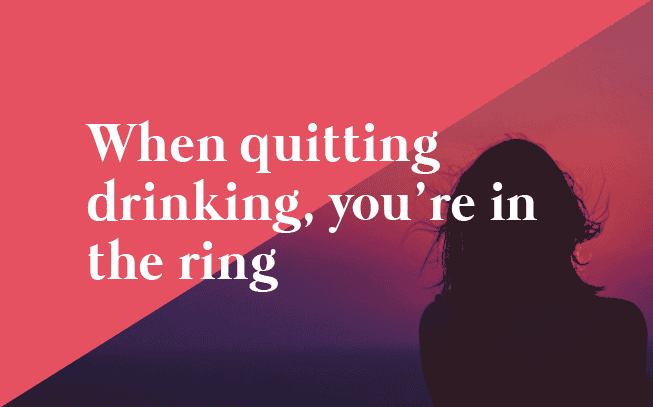
by Paul Churchill | Mar 15, 2020 | Alcohol Relapse, Blog, Early Sobriety, Helpful Tips, The First 24
I’d like to zoom out a bit and talk about the journey for a moment. There is no one size fits all approach to ditching the booze, but I think most of us can agree, there can by trying times. You often hear on the Recovery Elevator podcast from myself and interviewees how incredible a life without alcohol can be, which I can attest to. Still, the pathway can be complicated at times, and for reasons unknown, more challenging for some.
There is a comfort knowing you’re not alone. That you’re not the only person on the planet, who struggles with alcohol, which is how I felt when I first began my journey early last decade. There is also a comfort knowing that collectively, people find this pathway hard. The pains and painful moments are all part of it, and you’re not alone. Keep in mind, of the roughly 100,000 genes we inherit, not of them is the addiction gene, and you can reverse this progression.
Right now, since you’re reading this, it places you in the ring. You’re an active participant in the game of life. You’re in the center of the ring, and not up in the grandstands observing. And you’re an absolute badass, for purposefully placing yourself in this ring where there’s a good chance, almost certain chance, you’re going to get dirty. Smacked, kicked, punched, rolled over on, and a lot of other unpleasant things. This isn’t you saying, well, I’m open to failing, it’s you saying, I’m going to fail as many times as I need to be successful.
I admire each and every one of you for consciously choosing the enter the ring. Seriously. It’s impressive. I applaud all of you for continuing to listen to the podcast even if the message hasn’t quite “hit home” yet.
Now, to be fair, by electing to be here, living life on planet earth places you in the ring, so everyone is more or less in the ring. But your decision to move forward in life without alcohol, to address what’s holding you back in life, places you in the center of the ring and not way up in the upper decks as an observer. Your conscious decision to depart from the booze, from what provided relief, from what used to make your job, anxiety, depression, shame, guilt, winter, your neighbor Tom, and individual relationships bearable places you front and center of the ring.
You might be saying, “wait a second Paul, I haven’t told anyone about my decision to quit drinking.” Well, even if the only ship you’ve burnt is with yourself, which is where it starts, you’ve still taken the most essential step in your life. This is what makes you brave… courageous… valiant… daring… vulnerable… adventurous… and a bold leader.
Now you may have heard courageous and vulnerable in the same sentence, and that’s no coincidence because they are the same damn thing. And Deep down, you know, the only way out is through. And to go through, you get cracked open, in the most beautiful of ways. It’s almost like a vulnerable sandwich. First, we must be courageous enough to be vulnerable. Then we must be courageous again to address the vulnerable parts. The vulnerability sandwich. I like it, I will personally be adding some horseradish mayo or honey mustards. I’m a huge sauce guy.
Now let me describe what the ring looks like… Imagine a bull ring from Spain. One that Ernest Hemingway would write about in the “Sun Also Rises.” When you stop running, turn, and face your fears, you just made the conscious decision to place yourself in the center of the ring. Now, as I said before, everyone is in the ring, but you just came down from row 55, which is near the top and are now inside the ring. You can still get shoved around while sitting in the top row of the stands, and there’s a slim possibility you’ll to confront a bull, but by sitting way up there, you’re well in the comfort of your comfort zone.
Apart from the occasional shirt getting launched up there from a t-shirt cannon, not much happens. It’s a bunch of people who are living behind screens which have mighty thumbs and can type whatever they want. Up there, where you used to be, It’s called the sidelines of life. Where all you have is talk, inaction, and empty goals. How does that saying go? Talk is inexpensive? Talk is a bargain? Talk is of lesser quality… Talk is cheap. Got it.
So here you are, inside the ring. You look down to find your shoes are covered in dust. You suddenly feel smaller. Things don’t smell quite right. And you see large bulls running around. You see swords, bows, and arrows, spears, dinner parties where alcohol is flowing freely, your best friend Aaron is offering you a vodka cranberry. You don’t have things figured out. You recognize it’s only a matter of time before you get your ass kicked.
As I mentioned last episode, it’s not about avoiding these ass-kickings in life; it’s about getting up and back into the ring. I think I’ve done a fair job of accurately describing what this journey will be like. I cover this specifically in episode 250 titled “Is Sobriety all Unicorns and Rainbows.” Sure, after alcohol, a new life awaits, one without crushing hangovers and self-loathing, but when in the ring, there will be challenging days. Moments you don’t think, keyword think, you’ll be triumphant, but you are. You find the strength because it’s there. I know it’s there. It always has been.
Let me read one of my favorite quotes of all time for you. One that I had framed and hung up on my wall before the very FIRST episode of Recovery Elevator podcast dropped on February 25th, 2015. I remember looking up at the framed quote on the wall, them uploading episode 001 to iTunes and then said to myself, “Oh shit, here we go.”
“It is not the critic who counts; not the man who points out how the strong man stumbles, or where the doer of deeds could have done them better. The credit belongs to the man who is actually in the arena, whose face is marred by dust and sweat and blood; who strives valiantly; who errs, who comes short again and again, because there is no effort without error and shortcoming; but who does actually strive to do the deeds; who knows great enthusiasms, the great devotions; who spends himself in a worthy cause; who at the best knows, in the end, the triumph of high achievement, and who at the worst, if he fails, at least fails while daring greatly, so that his place shall never be with those cold and timid souls who neither know victory nor defeat.”
– Theodore Roosevelt.
I think Teddy does a damn good job of summarizing just what level of Ninja status you’re at. You’re in the ring, which is all that matters. Now the thing you’re probably saying to yourself is this. “Teddy’s right. I don’t care what others think about me.” Say it to yourself, it sounds good. It feels good. But how come when we get criticism, it usually stirs up a whirlwind of emotions in some part of the body? You’re like hang on, I just told myself, I don’t care what others think about me, but how come there’s a knot the size of a grapefruit in my solar plexus? It’s because we’re wired as human beings to care.
We are genetically hardwired to care what others think about us. The reason why is we need a tribe. We need a community to survive. Okay, so here’s where I can add comfort. Criticism is normal. In fact, it can be a barometer knowing you’re on the right path. How does it go? Haters gonna hate, hurt people hurt people… Blah to them. We’ve covered countless ways on this podcast to stay grounded, to no let others affect your energy, but let’s be honest, some of it still hurts. It always will, and that’s alright. Allow yourself to feel it, and I can promise you with a capital P, alcohol will only create another, more ferocious critic.
Now, who’s the critic? Who’s the person saying you’re not worth it, or you don’t deserve this, or don’t even try because you’ll never make it? It’s not who we think it is. Stick with me for a second here.
The spectator, or the critic we’re thinking about, the one we imagine sitting in the stands, heckling from above, in the comfort of their seat, is mostly quiet. Why? The spectator respects you, admires you, is almost envious of you… for your decision to be the most authentic version of yourself because deep down, they want the same. They want you to succeed. Sure, you may get the occasional cackle or low blow from above, but even they are saying, “go, go, get back up and get it, girl. DO it. Show us how. Lead the way.” They all want you to find traction on this journey.
The loudest critic
So who is the critic when you’re in the ring grappling with alcohol? Who is the one that places the most seemingly impenetrable walls on your path? Wait for it… It’s you. I’m 99.99% sure the worst critic is you. The constant voice hurling those vitriolic painful volleys and insults is coming from you, or the voice inside your head.
So this is good news. You can’t control disapproval from the outside, and well, you can’t really control the thinking on the inside either, but with awareness, you start to rewire this inner critic to be your inner cheerleader. Your biggest fan. A coach when you need it most.
The way you do this is becoming more conscious than ever of the unconscious self, and when thoughts come across the mind that says, “Michelle, let’s not even try, we won’t make it.” Say, “thank you for your input,” That’s it. That’s the equivalent of a tomahawk throw into an opponent in the ring. With awareness, and one departure from those unhealthy thoughts at a time, you begin to tune out this critic, you stand tall. You move forward in life without the poison called alcohol.
You can do this, I know you can. You’ve been doing the heavy lifting for quite some time now. You are up to this task, I know you are. Come on, we both know you are. Being in the ring is scary at first, terrifying, but with time, you’ll find comfort there. Even enjoy it. Welcome it. All of it.
Keep in mind, you’re the one with dust on your face, or for us, sometimes with puke in your hair. It’s you that’s in the ring, not the external critic. You’re the relevant one.
Keep trying, you’re so close
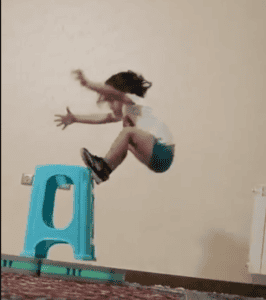
Check out this video of this you gal who can’t be more than 4,5 or 6 trying to jump up onto a block. She keeps trying and keeps failing. This block is hitting her in the chin, she’s falling over, but she keeps getting back up into the ring. And then, after heaps of jumps, she gets it. Just like you will.
I got the idea for this episode after I got a couple of emails from listeners who were ready to give up. To accept defeat and exit the ring entirely and surrender to a life of drinking and misery. HANG WITH ME. I’m going to ask the readers a question.
Was there ever a moment when you could have sent that same email when you were ready to quit? Hang on,,, okay, every single reader who has ditched the booze or is in the process just nodded their head. SO, if this is how you’re feeling at the moment, know it’s completely normal, some call it the dark night of the soul. Which means you’re so close. So promise me to stay in the ring, for as long as it takes. Do you know who else is in the ring with you? Me, and let me tell you, the other side… is much closer than you think.
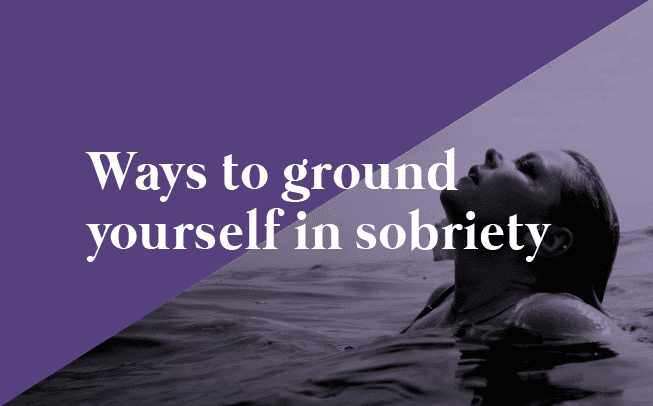
by Paul Churchill | Apr 15, 2019 | Blog, The first Year
I’m going to cover the techniques I use to ground myself when I’m having a rough day, or am feeling anxious. Let’s face it, there can be times in sobriety when we find ourselves taking things one day at a time (ODAAT), or one hour at a time (OHAAT), or one minute at a time (OMAAT). Sometimes on this journey, we’ll find ourselves logging days in our sobriety tracker apps like it’s no thang! Other days, we wake up and quickly realize keeping the mind in check will be a constant struggle. So here are some of my favorite techniques I use to ground myself, to pull myself back into the body, away from the mind and into the present moment.
- Acknowledge what is happening – Anxiety is great at tricking you into believing that something is real. So all these fear-based thoughts you are having are simply that: thoughts. Thoughts aren’t real. Once you acknowledge this and say “wait a second” I’m not going to die, and in a couple of hours, one or two days tops, this will all be fine.”
- Think in terms of we. Which of these two sentences sound better – 1. I am struggling right now. 2. We are struggling right now. Most of us orientate our thoughts to the individual self, but science is showing, we receive a great benefit when we think of terms of “we” which isn’t a lie because we are all connected. It’s totally fine to struggle on this journey, but there is no need to struggle alone.
- Take your shoes off and walk outside barefooted. This is literally called grounding or earthing. You, all people, animals, plants, and inanimate objects are electrical beings living in an electrical world. Everything that’s made of atoms (so…everything) has a net charge that’s either positive, negative, or neutral. Grounding means discharging built-up static electricity either directly into the earth. The earth has a negative charge, and you have a positive charge. Walking barefooted in grass, or on the beach allows you to release an excess of unbalanced energy. If you’re pacing back and forth with anxiety, do it outside without shoes. You’ll instantly start to feel better. There are several books written on this topic that shed light on why earthing is so powerful!
- Usually, when we find ourselves spinning out, we’re moving too fast. We’re rushing through the day seeking ways to mitigate inner turmoil, but we’re going to fast to find what we’re looking for. As Jane Wagner would say, “for fast-acting relief, slow down.” Usually, when we are in this perpetual “crazed” state, all tasks are done as a means to an end and little quality or presence is attached to any duties. I always tell myself, if you want to get somewhere fast, go slow. When I encounter a flight of stairs, I make a point to climb or descend the staircase slowly, making conscious contact with each stair. When I park my car, I wait till I see the clouds moving before exiting the vehicle.
- Do not multitask – Studies show that human beings are terrible at multitasking. If you find yourself talking at the phone, and sending an email or text at the same time, most likely you’re not doing any of these tasks well.
- You are nature, so take a time out, and go be in your natural setting. Ideally, pick a location with a soundtrack such as a stream, birds chirping, or the sound of the wind in the trees. Ideally, I try to go for a hike or walk in nature without shoes. Almost all of these grounding techniques can be done in tandem!
- When I’m not feeling grounded, I start paying close attention to where this feeling is located in the body, more specifically in the stomach and solar plexus area. Almost always, I recognize this region is tensed up and tight. When I feel anxious, I notice my stomach muscles are always flexed, and my breathing becomes shallow. Once I’m aware of this, I can start breathing from the belly and relaxation sets in.
- Stop saying I CAN do this, because you ARE doing this. It doesn’t matter where you currently find yourself on this journey into sobriety, you ARE doing this!
- Go with the gut. 11 billion bits of information bombard your energy field every millisecond and most report to the gut area and not your head. Always trust the gut/intuition on where to go next, even if it seems like a 180 from what the mind is saying.
- I tell myself “this isn’t me.” A couple of months ago, I found myself unable to fall back asleep because my mind wouldn’t stop going. It was frustrating and I deeply needed sleep since I had a busy day ahead of me. After about 30 minutes of the mind trying to solve every problem on the planet, I finally said, “Paul, this isn’t you.” and within a matter of minutes, I was asleep. As Michael Singer says in “The Untethered Soul.” you are not the voice inside the head, but the one who hears it!
These grounding techniques are highly effective when the edge of life is sharp, or when we experience a craving to drink alcohol. I encourage you to practice these before an emotional rollercoaster arrives so you’re better prepared to ride out the uncomfortable feelings or cravings. Let me know in the comments what helps you get grounded.
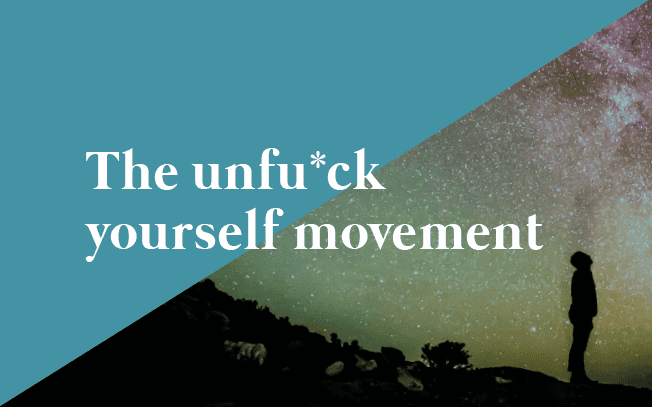
by Paul Churchill | Apr 9, 2019 | Blog, Early Sobriety, The first Year
I was in a bookstore at the airport the other day and noticed a trend while looking at the top twenty best sellers. There were several books with clear, unambiguous titles. Our society collectively is starting to wake up and is looking for ways to unfuck themselves. These are the book titles I saw that were all clumped right next to each other. 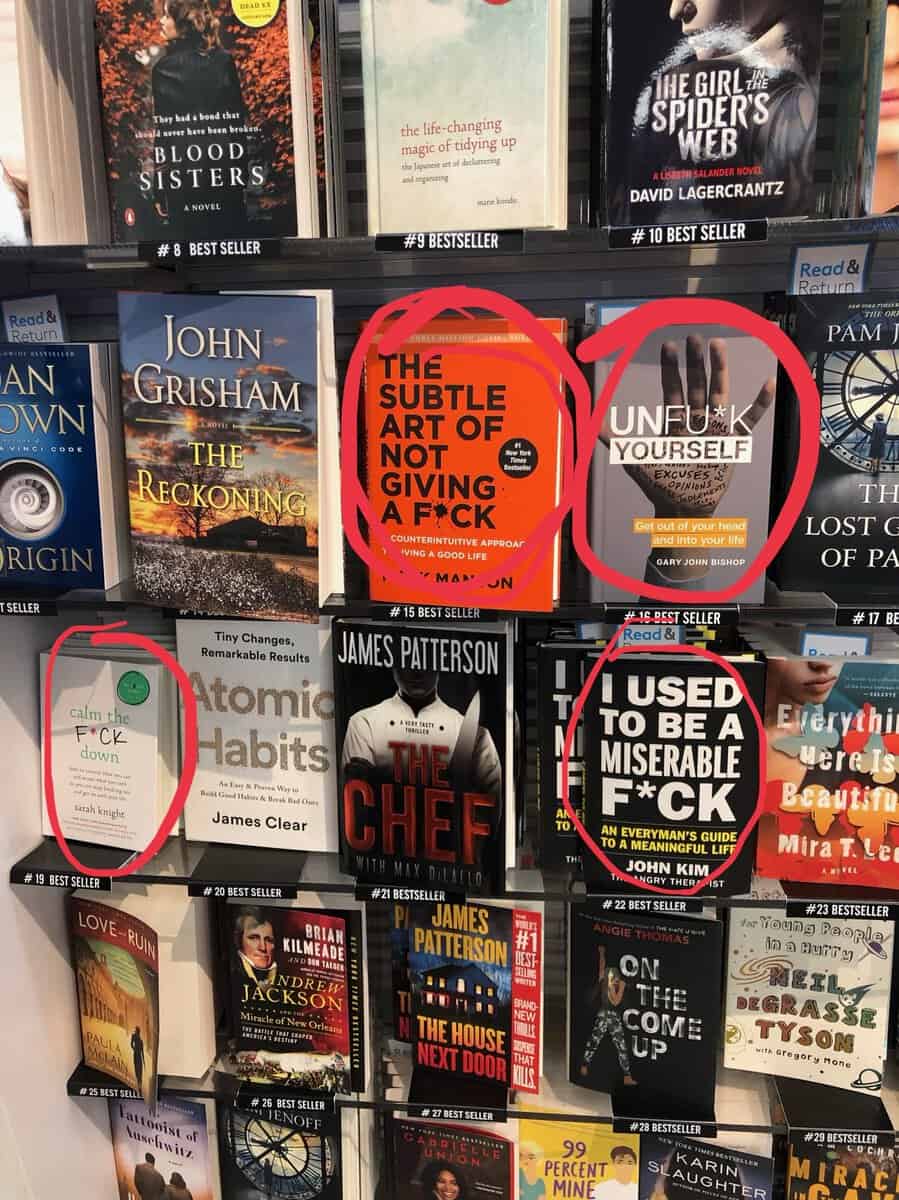
UnFu*ck yourself by Gary John Bishop
I used to be a miserable Fu*ck by John Kim
Calm the Fuck down – Sarah Knight
The Subtle Art of Not Giving a Fuck Mark Manson
After a quick Amazon search, I found several more books with similar titles such as
Unfuck your Brain by Faith Harper
Unfuck Yourself by Zoe Swain
I’m currently writing a book about alcohol addiction, and I’m not 100% sure of what my book title will be, but it may have the words unfu*ck yourself somewhere on the cover. I want to be clear, I had this written down on my list of potential book titles for a long time, not just because I saw a bunch of these titles in the airport:) The title at this moment is Alcohol is Shit | but it’s also the invitation. Below that title, it will say either, “control alcohol from the inside out” or “Unfuck yourself from the inside out.” Not sure yet. Let me know your thoughts in the comments.
All these books, including mine, isn’t fulfilling a niche or a trend, they are representing a movement that can no longer be ignored. There’s a consciousness on this planet that is starting to say, hang on a second, this isn’t working. Those of us who struggle with addiction, sometimes think we’re the only ones who reach a rough spot on life. Not true, everyone does, and we’re reaching a critical mass, especially in America. On a global scale, people are starting to say, timeout, hold the phone, the formula that I was told to follow in life, isn’t yielding the fruits I was promised.
I recently read an article titled the Age of Anxiety in the New Republic that sheds light on this movement.
According to studies by the National Institute of Mental Health, nearly 20 percent of Americans experience an anxiety disorder in a given year; over 30 percent experience an anxiety disorder over the course of their lifetimes. And the rate is rising: The American Psychiatric Association, in a May study drawing from a survey of 1,000 American adults, diagnosed a statistically significant increase in national anxiety since 2017.
Please read carefully. There is nothing fundamentally wrong with you. Right now, at this moment, there’s nothing wrong with you. Never has been and never will be. Take a deep breath; we are okay. This anxiety is a good thing and shouldn’t be labeled in some diagnostical statistical manual as bad because this collective state of unrest will eventually show us the way.
According to the article in the New Republic, this jittery national mood has given rise to what Rebecca Jennings at Vox has dubbed “anxiety consumerism”—the rise of a plethora of products, from fidget spinners to essential-oil sprays, to weighted blankets. These weighted blankets were initially developed for people with autism and PTSD as self-administered hugs, to give the sensation of an embrace, but sales for these blankets have gone through the roof, and everyone is buying them. Perhaps the most well-known product to fall into this anxiety consumerism category is alcohol. Just about everyone on the planet right now needs a big hug.
Who is going to initiate this hug?
Those who struggle with addiction are the trailblazers in the collective unf*ck yourself movement that desperately needs to happen. Not just for those who grapple with addiction to alcohol, but for everyone. As a global community, we’re starting to see what’s not working and alcoholics were the first to see it. We are leading this movement and will eventually be the ones who hold the door open for the rest of society. Let that last sentence sink in for a second. You and me. We will be leading the global unfu*ck yourself movement for everyone. Not just those who struggle with addiction.
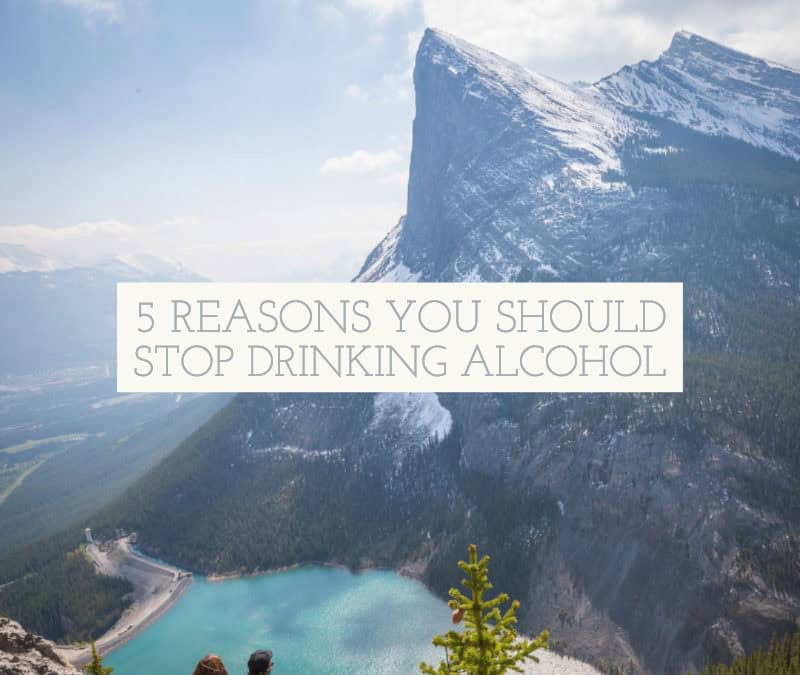
by Paul Churchill | Mar 28, 2019 | Blog, Helpful Tips, Resources, The first Year
I was completely ignorant of how beneficial giving up alcohol would be to the overall quality of my life. After all, alcohol became me. I spent a huge chunk of my life intimately interacting with alcohol, completely isolated from any other solution. When I was first introduced to recovery, a life absent of alcohol, I wasn’t convinced that it was for me. Fear crept in and I rebelled against the idea of letting go of my vice. Until one day, the pain I was experiencing was far greater than my fear of change. First, I had to admit to my innermost self just how detrimental my drinking had become and the magnitude of the harm I was causing myself and others.I was pleasantly surprised to find that giving up alcohol enhanced my life so much more than I ever could’ve imagined.
If you are unconvinced and on the fence about sobriety, let me be the first to assure you that things will only get better. What’s the worst that can happen? You may face conflict and resistance at first. Once you get over the initial slump, I can assure you, your life will approve drastically once you reach the other side of alcoholism. Here are 5 reasons you should stop drinking alcohol.
Health Improvement
One of the most obvious reasons you should stop drinking is because of the direct negative effects of alcohol abuse. Heavy drinking increases your risk of obesity, diabetes, cirrhosis, kidney failure, and heart disease. When you make the decision to stop drinking alcohol your overall health wellbeing will improve in a multitude of areas:
-
Brain: A recent study suggests that as little as two weeks, of sobriety, can reverse and even heal damaging effects of alcohol on the brain.
-
Heart: Abstinence from alcohol will decrease your chances for developing high blood pressure and your risk for heart attack or stroke.
-
Skin: Alcohol is a potent diuretic. When you stop drinking alcohol, your skin’s elasticity will return as you naturally become more hydrated.
-
Weight: The calories found in alcohol are void of any nutritional value, but rather are filled with empty calories. Your appetite will soon return and you will consume nutritional foods rather than consuming unhealthy sugars.
Emotional Stability
Alcoholics spend most of their lives trying to numb all emotions with alcohol. When you stop drinking, your emotions may be all over the place. In fact, I had a hard time even identifying my emotions when I first got sober. Eventually, that changed. Consuming alcohol can lead to incomprehensible demoralization, which ultimately ends in guilt and shame. Absent from alcohol, guilt is eliminated. Quitting alcohol can relieve symptoms of anxiety, depression, encourage longer/deeper sleep, and overall stabilize mood.
Financial Freedom
When I was drinking, life was tough. Not only was I spending way too much on alcohol, but I evaded any/all financial responsibilities. Eventually, I wasn’t able to be much use at work either. Without alcohol, you are able to be a productive member of society. The money spent on alcohol can be spent on repaying old debts and current bills. Financial freedom comes, once you put down alcohol.
Mental Clarity
Mental clarity, memory, and focus are seriously impaired when under the influence of copious amounts of alcohol. The benefit of not drinking alcohol will directly impact your mental clarity. I don’t know about you, but the mental fog I experienced on a daily basis created many problems for me. My memories were skewed, my thinking was delusional, and I couldn’t focus on any task that didn’t involve drinking more. When you give up alcohol, the fog is lifted. One study followed a group of men and women with at least 6 months into their sobriety. Researchers were unable to distinguish any cognitive differences between the recovering drinkers and the non-drinkers.
Quality Relationships
One of the most meaningful benefits of my sobriety is the quality of the relationships in my life today. Truth be told, when I was drinking I was unable to maintain any healthy relationship. I had an unhealthy love affair with alcohol. I was a horrible friend, daughter, mother, and human in general. I preferred isolation over engaging in interpersonal relationships. When you quit drinking alcohol, the veil is torn away. You may find acceptance of relationships that have been damaged, beyond repair. Communication doesn’t ignite fear but rather it becomes a healthy necessity. You are able to make healthy choices and mend broken relationships
When you first stop drinking, you may feel like a total train wreck. (That’s how I felt) It didn’t take long before all of the promising benefits of sobriety, started to become my reality. I’m not sure I ever experienced the mental, physical, spiritual, and emotional freedom prior to getting sober. Without the commands of alcohol shackling you to self-propelled misery, the world is your canvas. When you decide to stop drinking you get the opportunity to live a life beyond your wildest dreams.
This is a guest post from Tricia Moceo who is an Outreach Specialist for Recovery Local, a local addiction/recovery-based marketing company. She advocates long-term sobriety by writing for websites like detoxlocal.com, providing resources to recovering addicts, and shedding light on the disease of addiction. Tricia is a mother of two, actively involved in her local recovery community, and is passionate about helping other women find hope in seemingly hopeless situations.









